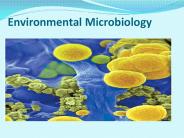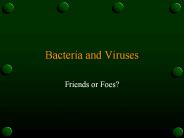Phototrophism PowerPoint PPT Presentations
All Time
Recommended
Some chemical is produced in the tip and transmitted down the stem to ... 2, 4-D and 2,4,5-T are herbicides for broad-leaved plants at very low concentrations. ...
| PowerPoint PPT presentation | free to view
Survival and response Aim: To understand the responses animals and plants make in order, to increase their chance of survival What changes in the environment do ...
| PowerPoint PPT presentation | free to view
Plants Classifying Plants: 2 Main Groups of Plants: A. Nonvascular: have no vessels, no roots, no stems or leaves. Examples: Mosses & Liverworts
| PowerPoint PPT presentation | free to view
Plants Chapters 22-25 Flowering plants Cone-bearing plants Ferns and their relatives Flowers; Seeds Enclosed in Fruit Mosses and their relatives *FYI: GREEN ALGAE is ...
| PowerPoint PPT presentation | free to download
Plant Hormones 101 MUPGRET Workshop What are hormones? a group of naturally occurring organic compounds that influence physiological processes at low ...
| PowerPoint PPT presentation | free to view
Jeopardy Pictures Tissues Control System Pot Pouri Structure Q $100 Q $100 Q $100 Q $100 Q $100 Q $200 Q $200 Q $200 Q $200 Q $200 Q $300 Q $300 Q $300 Q $300 Q $300
| PowerPoint PPT presentation | free to download
Kingdoms . There are 6 Kingdoms, in 3 different Domains: Domain Archaea: Kingdom . Archaebacteria: prokaryotes that seem to have diverged very early from bacteria.
| PowerPoint PPT presentation | free to download
Vascular cambium. Meristematic tissue that produces new bundles of xylem and phloem. ... Cork cambium. Layer of meristem produced from cells of the ground tissues. ...
| PowerPoint PPT presentation | free to view
Microbial Ecology Microbial Ecology the interactions of m.o. with the biotic and abiotic components of the environment The importance of these interactions and their ...
| PowerPoint PPT presentation | free to download
Ecological Pyramid is Explained in Hindi Follow me on Instagram: https://www.instagram.com/learnwithsuperheroes/?hl=en Follow me on FACEBOOK: https://www.facebook.com/Learn-With-Superhero-381591932449118/ Subscribe to my Channel: https://www.youtube.com/channel/UCGn6uf9zMnW_Sn491gsUCfg?sub_confirmation=1
| PowerPoint PPT presentation | free to download
Environmental microbiology is the study of microbial processes in the environment, microbial communities and microbial interactions. This includes: Structure and activities of microbial communities Microbial interactions and interactions with macroorganisms Population biology of microorganisms Microbes and surfaces (adhesion and biofilm formation) Microbial community genetics and evolutionary processes (Global) element cycles and biogeochemical processes Microbial life in extreme and unusual little-explored environments
| PowerPoint PPT presentation | free to download
Nitrogen in the form of Dinitrogen (N2) makes up 80% of the ... Actinomycetes (Gram , filamentous); septate hyphae; spores in sporangia; thick-walled vesicles ...
| PowerPoint PPT presentation | free to view
Microbial physiology ... release energy Energy Production 3 Biochemical Mechanisms Utilized ... DNA DNase Proteins Protease removes a Hydrogen ...
| PowerPoint PPT presentation | free to download
Plant Hormones Plant growth regulators What does a plant need to respond to in its environment? Light Water Gravity How are plant growth factors different from animal ...
| PowerPoint PPT presentation | free to view
Title: Slide 1 Author: Heba Mohamed Adel El-Bialy Last modified by: Heba Mohamed Adel El-Bialy Created Date: 4/14/2006 1:23:11 AM Document presentation format
| PowerPoint PPT presentation | free to view
Chapter 27 Prokaryotes and the Origins of Metabolic Diversity
| PowerPoint PPT presentation | free to view
Digestion and Nutrition Chapter 32
| PowerPoint PPT presentation | free to download
PHOTOSYNTHESIS Uses energy from sunlight Converts water and carbon dioxide from the environment into organic food molecules and oxygen gas
| PowerPoint PPT presentation | free to download
La g nomique nouvel observatoire du monde microbien Jean Weissenbach (Genoscope Centre national de s quen age) Universit de tous les savoirs
| PowerPoint PPT presentation | free to view
Title: Lecture 2: Bacterial Polymerization Author: Greg Marczynski Last modified by: Shixue Yin Created Date: 8/10/2002 9:34:05 PM Document presentation format
| PowerPoint PPT presentation | free to view
Chapter 5: Microbial Metabolism
| PowerPoint PPT presentation | free to view
Title: No Slide Title Author: The Weber Family Last modified by: rabideau Created Date: 5/28/1995 4:18:48 PM Document presentation format: On-screen Show
| PowerPoint PPT presentation | free to download
Aquatic Biomes & Ecosystems 1. Define an estuary: transitional area where a river flows into the ocean Abyssal Zone 19. Describe animal adaptations: * Slow ...
| PowerPoint PPT presentation | free to download
Chapter 6 Microbial Nutrition and Metabolism Concepts Microorganisms require about 10 elements in large quantities, in part because they are used to construct ...
| PowerPoint PPT presentation | free to view
Title: Pr sentation PowerPoint Author: DV Last modified by: blanchot Created Date: 4/26/2001 8:22:30 PM Document presentation format: Affichage l' cran
| PowerPoint PPT presentation | free to view
Photosynthesis Chapter 10
| PowerPoint PPT presentation | free to view
Plant Growth Regulators AKA Plant Hormones Plant Growth Regulators - control growth, development and movement
| PowerPoint PPT presentation | free to view
CE421/521 Environmental Biotechnology Nitrogen and Phosphorus Cycles Lecture 9-26-06 Tim Ellis
| PowerPoint PPT presentation | free to download
Title: Slide 1 Author: MARTIN HUSS Last modified by: MHUSS Created Date: 4/12/2006 10:58:09 PM Document presentation format: On-screen Show Company
| PowerPoint PPT presentation | free to view
Title: PowerPoint Presentation Author: kleypas Last modified by: avo065 Created Date: 1/16/2003 9:14:20 PM Document presentation format: On-screen Show
| PowerPoint PPT presentation | free to view
Ethanolic fermentation 2 pyruvate + 2 NADH - 2 ethanol + 2 CO2 Recap of Fermentations, cont. Respiration Aerobic Respiration In aerobic respiration, ...
| PowerPoint PPT presentation | free to view
The Science of Life * * Biology The Study of Life Life arose more than 3.5 billion years ago First organisms (living things) were single celled Only life on Earth ...
| PowerPoint PPT presentation | free to view
... Catabolism Anabolism Coupled Reactions Nutrition Phototroph Chemotroph Organotroph Lithotroph Chemolithotroph Macronutrients Carbon Nitrogen P, S, K, Mg, Ca ...
| PowerPoint PPT presentation | free to download
WordSkills: Lesson Eight ...
| PowerPoint PPT presentation | free to view
Title: 1 Author: okamoto Last modified by: FJ-USER Created Date: 5/20/2003 11:21:09 PM Document presentation format: (4:3)
| PowerPoint PPT presentation | free to view
Introduction to Biology *
| PowerPoint PPT presentation | free to download
Title: PowerPoint Presentation Author: kleypas Last modified by: joan kleypas Created Date: 1/16/2003 9:14:20 PM Document presentation format: On-screen Show
| PowerPoint PPT presentation | free to view
rod shaped, Gram negative, lophotrichous. chemoheterotrophs. Pseudomonas ... Sulfolobus (hot springs of Yellowstone National Park) - oxidizes sulfur ...
| PowerPoint PPT presentation | free to view
... (Inductive Reasoning) Question: ... Populations of plants and animals that interact with each other in a given area, along with the abiotic components ...
| PowerPoint PPT presentation | free to download
Bacterial Metabolism Metabolism Sum up all the chemical processes that occur within a cell 1. Anabolism: Synthesis of more complex compounds and use of energy
| PowerPoint PPT presentation | free to download
Title: PowerPoint Presentation Author: THunt Last modified by: THunt Created Date: 10/8/2004 11:57:02 PM Document presentation format: On-screen Show
| PowerPoint PPT presentation | free to view
Microbial Ecology and Controlling Microbial Growth Module 5
| PowerPoint PPT presentation | free to view
PROKARYOTES 20.2 Introduction to Prokaryotes First discovered by Anton van Leeuwenhoek in 1683 (invention of light microscope) Are prokaryotes No nucleus Exist ...
| PowerPoint PPT presentation | free to view
Synthetic Biology & Microbial Biofuels George Church, MIT/Harvard DOE GtL Center DuPont 13-Sep-2006 Our DOE Biofuels Center goals & strengths 1.
| PowerPoint PPT presentation | free to download
Microbial Nutrition & Growth Nutrient Requirements Nutrient Transport Processes Culture Media Growth in Batch Culture Mean Generation Time and Growth Rate
| PowerPoint PPT presentation | free to download
Microbiology: A Systems Approach, 2nd ed. Chapter 8: Microbial Metabolism- the Chemical Crossroads of Life 8.4 Biosynthesis and the Crossing Pathways of Metabolism ...
| PowerPoint PPT presentation | free to download
There are 2 types: helizoans (freshwater) and radiolarians (colonial) Forams They are marine animals, living in sands, with multi-chambered shells. Most are fossils.
| PowerPoint PPT presentation | free to view
Metabolism: All chemical reactions and physical workings of the cell ... site where the substrate binds is a crevice or groove called the active site or catalytic site ...
| PowerPoint PPT presentation | free to download
Bacteria and Viruses Friends or Foes?
| PowerPoint PPT presentation | free to download
Fermentation: Catabolism of carbon in the absence of a terminal electron acceptor (like O2) for electron transport chain Photosynthesis and Autotrophy I ...
| PowerPoint PPT presentation | free to download
4 major groups. bacteria, ... Six major elements in cells. C - Carbon. H - Hydrogen. N - Nitrogen. O ... Zn - Zinc. Mo - Molybdenum. Cu - Copper. Mn ...
| PowerPoint PPT presentation | free to download
Sulfur Cycle: Major Pools
| PowerPoint PPT presentation | free to view
Why do we need to store ... culture media These are used to detect or isolate particular organisms Are ... and disease Different pathogen can only ...
| PowerPoint PPT presentation | free to download
























































